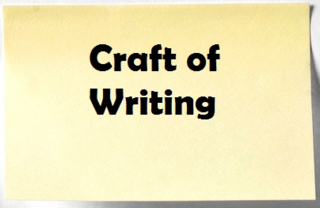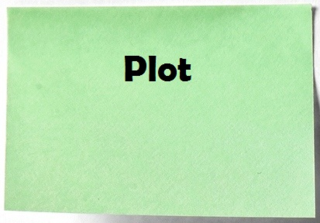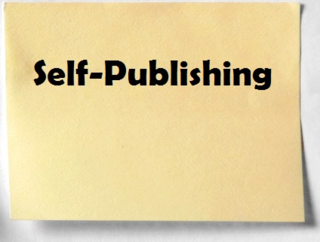Rob Bignell's Blog, page 333
May 30, 2014
How to get your title into bookstores
When promoting  your self-published book, you may want to get the paper versions into bookstores. Besides fulfilling the fantasy that virtually every author (including me) possesses, your book for sale on a shelf should lead to a least a few more copies moving into readers’ hands; if you have published multiple titles for sale, a lone reader liking just one of your books can lead to them purchasing from your backlist.
your self-published book, you may want to get the paper versions into bookstores. Besides fulfilling the fantasy that virtually every author (including me) possesses, your book for sale on a shelf should lead to a least a few more copies moving into readers’ hands; if you have published multiple titles for sale, a lone reader liking just one of your books can lead to them purchasing from your backlist.
Getting into a bookstore can be difficult for a self-published author, though. Chain bookstores, discount merchandisers, and supermarkets are nearly impossible for placing your book because of their business model, and some bookstore managers believe if they can’t find you through Ingram Books or Baker&Taylor – the two largest distributors of books to retailers – then your book isn’t worth stocking.
But there are places that will carry your books. Many ma and pa bookstores, gift shops, or specialty stores (an outfitter if you write books about local kayaking, for example) will stock books by regional authors. Your first objective is to identify what those stores might be. Be forewarned, you may find only a few in your area; at best, I’ve found two per county in the regions that my hiking guidebooks are targeted.
Once you’ve identified these stores, your next step is to contact them. Either through email or in person is fine. You may want to develop a sell sheet for your book, not so much to give to the retailer but so you can develop your own pitch to get them to carry the title. The two keys to convincing them are: 1) I’m a local author or 2) My book is about the geographical region your store serves. This appeals to the retailer because they’ve determined their customers either like to purchase books by local authors or books about the region the store serves. Always bring copies of the book with you for the retailer to see, and be willing to leave signed copies for them to sell.
Next, you’ll need to agree to how much you’ll be paid for the book. Typically, your book is taken on consignment and will give you a 60-40 split, meaning you get 60% of the retail cost while they receive 40%. Each retailer is a little different, however, in what percentage they’ll agree to for a split. In addition, some will pay up front for the books while others only will pay for what is sold. In the latter case, always be willing to take returns on unsold copies of your book.
One final note: Never depend upon bookstores as the primary way of distributing your book. An old adage among authors goes “Bookstores are a great place to look at books but a lousy place to sell them.” You’ll find that far more of your sales occur online or at tables you man at book fairs and signings.
Need an editor? Having your book, business document or academic paper proofread or edited before submitting it can prove invaluable. In an economic climate where you face heavy competition, your writing needs a second eye to give you the edge. Whether you hail from a big city like San Diego or a small town like San Jon, New Mexico, I can provide that second eye.
<A HREF="http://ws-na.amazon-adsystem.com/widg... Widgets</A>Related articles
 Does your book cover design matter for ebooks?
Does your book cover design matter for ebooks? Why bookstores don't carry self-published books
Why bookstores don't carry self-published books
May 29, 2014
Editing client wins two awards for her books
A recent editing  client has been honored with two prestigious awards. North Carolina yoga therapist and instructor Brenda Schnable’s book “Access Your Inner Power: Awakening Your Health and Vitality” (which I edited), was listed as a finalist in the 2014 International Book Award’s “Health: Alternative Medicine” category. The book introduced the world to Qi Infused Yoga, which Schnable developed. Her sequel, “Qi Infused Yoga,” was an award-winner in the “Best Cover Design: Non-Fiction” category. Her books are available for purchase online.
client has been honored with two prestigious awards. North Carolina yoga therapist and instructor Brenda Schnable’s book “Access Your Inner Power: Awakening Your Health and Vitality” (which I edited), was listed as a finalist in the 2014 International Book Award’s “Health: Alternative Medicine” category. The book introduced the world to Qi Infused Yoga, which Schnable developed. Her sequel, “Qi Infused Yoga,” was an award-winner in the “Best Cover Design: Non-Fiction” category. Her books are available for purchase online.
Need an editor? Having your book, business document or academic paper proofread or edited before submitting it can prove invaluable. In an economic climate where you face heavy competition, your writing needs a second eye to give you the edge. Whether you're from a big city like Phoenix or a small town like Duckwater, Nevada, I can provide that second eye.
<A HREF="http://ws-na.amazon-adsystem.com/widg... Widgets</A>Related articles
 Editing client, Ed Wyns, publishes first novel
Editing client, Ed Wyns, publishes first novel Editing client releases first book, 'Made This Way'
Editing client releases first book, 'Made This Way' Editing client releases first novel in four-part saga
Editing client releases first novel in four-part saga Editing client releases quest novel sequel
Editing client releases quest novel sequel
May 28, 2014
Clean it up: Shakeout vs. shake out vs. shake-out
It’s time  to clean up the confusion about these three words.
to clean up the confusion about these three words.
Shakeout is a noun that means either: 1) the shrinking of the number of businesses in an industry due to mergers, acquisitions and going out of business; or 2) an annual earthquake preparedness drill, as in Los Angeles will participate in The Great California ShakeOut during October.
Shake out is a verb that means cleaning by shaking, as in Please shake out the bed sheets; they’re full of cracker crumbs.
Shake-out is a misspelling of the above two words.
Need an editor? Having your book, business document or academic paper proofread or edited before submitting it can prove invaluable. In an economic climate where you face heavy competition, your writing needs a second eye to give you the edge. Whether you live in a big city like Houston or a small town like Pittsfield, Vermont, I can provide that second eye.
<A HREF="http://ws-na.amazon-adsystem.com/widg... Widgets</A>
Related articles
 Out, error, out! Cleanup vs. clean up vs. clean-up
Out, error, out! Cleanup vs. clean up vs. clean-up When to use affect vs. effect
When to use affect vs. effect How to make your writing show rather than tell
How to make your writing show rather than tell Scrubbing out those cleanup vs. clean up errors
Scrubbing out those cleanup vs. clean up errors
May 27, 2014
Use sensory details rather than internalized ones
One way  to make your writing more vivid is to use sensory details rather than internalized ones. Sensory details (blue, sour, loud, smooth) are specific rather than general. Internalized details (angry, pleased, innocent, civilized) amount to using fuzzy words and give no real impression of what is being described.
to make your writing more vivid is to use sensory details rather than internalized ones. Sensory details (blue, sour, loud, smooth) are specific rather than general. Internalized details (angry, pleased, innocent, civilized) amount to using fuzzy words and give no real impression of what is being described.
Consider this passage, written using internalized details:
Peter’s memories of his mother were vague. He closed his eyes, thought of her, but the memories were too few to ever last long.
Now consider the same passage rewritten to use sensory details:
Peter’s memories of his mother were vague, amorphous as melted candlewax. He closed his eyes, recalled her swiping at the cutting board with a knife, alternately rhapsodic and swinging chop bouncing through the house, of her combing her hair straight, of her smiling broadly, but there was little more.
Most readers prefer the passage that relies on sensory details. That is because it is tangible; the details in it are something the reader literally could see, hear, smell, touch or taste. In contrast, the passage relying on internalized details give the reader only a vague sense of what is occurring. The difference is one feels real (the one using sensory details) while the other reads like a dry, facts-only-ma’am report of what occurred (That’s the one using internalized details, btw.). The reader more easily falls into the fictional dream when sensory rather than internalized details are provided.
Need an editor? Having your book, business document or academic paper proofread or edited before submitting it can prove invaluable. In an economic climate where you face heavy competition, your writing needs a second eye to give you the edge. I can provide that second eye.
<A HREF="http://ws-na.amazon-adsystem.com/widg... Widgets</A>Related articles
 Treat readers to vivid passages in your story
Treat readers to vivid passages in your story Select right word to avoid reader confusion
Select right word to avoid reader confusion Ensure descriptive writing serves a purpose
Ensure descriptive writing serves a purpose Incorporate imagery into your story
Incorporate imagery into your story
May 26, 2014
Questions to ask yourself when plotting a story
When developing  a plot for your story, there are several key questions you ought to ask yourself.
a plot for your story, there are several key questions you ought to ask yourself.
First and foremost, ask yourself what is the story’s dramatic situation or central problem. This is the conflict that sets the story in the motion. It could be the arrival of alien spacecraft, the announcement in the Civil War camp that they will march into battle the next morning, or a positive result on a pregnancy test. Science fiction writer Robert Silverberg defines a dramatic situation as “…a zone of inevitable opposition of powerful forces that emits ever-widening reverberations until it is neutralized somehow in a way that creates understanding, insight and harmony.”
Next, ask yourself who is being hurt by this conflict and why they are being hurt. Whoever is affected by this this dissonance is your main character. It could be a local official trying to prevent panic now that a clearly alien spacecraft has landed in the village square, as that is his duty. It could be a young soldier who never wanted to enlist but was talked into it by his friends, yet believes killing is wrong. It could be the college student who tested positive for pregnancy but isn’t in a relationship and has dreams of a career. Often writers will say good fiction is character-based because the story ought to be about a character who has a difficult decision to make rather than the dramatic situation itself. In many cases, writers start imagining a story by thinking about the main character’s conflict.
After determining your story’s main character, ask yourself how that character will deal with this conflict. Ideally, this involves “ever-widening reverberations” of that dramatic situation, or in short, a thickening of the plot. Perhaps the local official calms the crowd, which was led by a person who lost the last election for the official’s spot. Now the local official’s motivations center not just on fulfilling his duties but on maintaining his power in the community. The plot further thickens when an unidentifiable device rises from the alien spacecraft and begins to hum menacingly. Now the local official’s difficulties have returned as the crowd doubts his reassurances. Through the story, the character should have to deal with the multiple conflicts, each one growing worse than the other; often this is referred to as rising action.
Lastly, ask yourself what can possibly resolve the main character’s conflict. As Silverberg explains, you must “bring manners to an end point” and “restore the universe’s harmony.” This is the climax of the story. The main character ought to make a difficult decision that resolves the conflict. Perhaps the Civil War soldier decides his belief in not killing is more important than loyalty to one’s friends and country and so decides to desert. Possibly the pregnant woman decides that despite the pleas of the man who impregnated her to marry him and her friends’ advice to get an abortion that she instead will give birth and raise the child on her own. While the character may face new problems arising from the solution (How will the Civil War soldier survive if he flees out West? How will the woman take care of the child while she is in school?), all that matters is that the personal conflicts facing the main character be resolved as it relates to the dramatic situation (Will the soldier go into battle or not now that marching orders have been given? Will the woman keep the child or not now that she is pregnant?).
Need an editor? Having your book, business document or academic paper proofread or edited before submitting it can prove invaluable. In an economic climate where you face heavy competition, your writing needs a second eye to give you the edge. I can provide that second eye.
<A HREF="http://ws-na.amazon-adsystem.com/widg... Widgets</A>Related articles
 Coming up with great story ideas
Coming up with great story ideas How to create suspense in your fiction story
How to create suspense in your fiction story Use broad conflict to set your story in motion
Use broad conflict to set your story in motion Create meaningful settings in your story
Create meaningful settings in your story
May 25, 2014
Five Great Quotations about Passion for Writing
“A writer never  has a vacation. For a writer life consists of either writing or thinking about writing.” – Eugene Ionesco
has a vacation. For a writer life consists of either writing or thinking about writing.” – Eugene Ionesco
“You may be able to take a break from writing, but you won’t be able to take a break from being a writer...” – Stephen Leigh
“You know what it means – you’re a writer and you understand it. It’s not just ‘the satisfaction of being published.’ Great God! It’s the satisfaction of getting it out, or having that, so far as you’re concerned, gone through with it! That good or ill, for better or for worse, it’s over, done with, finished, out of your life forever and that, come what may, you can at least, as far as this thing is concerned, get the merciful damned easement of oblivion and forgetfulness.” – Tom Wolfe
“I count it a high honor to belong to a profession in which the good men write every paragraph, every sentence, every line, as lovingly as any Addison or Steele, and do so in full regard that by tomorrow it will have been burned, or used, if at all, to line a shelf.” – Alexander Woollcott
“I never want to see anyone, and I never want to go anywhere or do anything. I just want to write.” – P. G. Wodehouse
Need an editor? Having your book, business document or academic paper proofread or edited before submitting it can prove invaluable. In an economic climate where you face heavy competition, your writing needs a second eye to give you the edge. I can provide that second eye.
<A HREF="http://ws-na.amazon-adsystem.com/widg... Widgets</A>Related articles
 Five great quotations about writer's block
Five great quotations about writer's block Five great quotations for aspiring writers
Five great quotations for aspiring writers Five Great Quotations for Aspiring Writers
Five Great Quotations for Aspiring Writers Five Great Quotations about Editing
Five Great Quotations about Editing Place commas inside quotation marks
Place commas inside quotation marks
May 24, 2014
Last step in writing: Place book in final form
Generally when  putting together a book or any other publication, writers follow a process that typically includes brainstorming (coming up with the story idea), outlining, writing a first draft, and revising. The final step in this process is final form, or formatting the manuscript.
putting together a book or any other publication, writers follow a process that typically includes brainstorming (coming up with the story idea), outlining, writing a first draft, and revising. The final step in this process is final form, or formatting the manuscript.
This step usually was only done once the text had reached the exact version that the writer wanted. The manuscript then would be sent off to an editor or literary agent in hopes of getting it published. Advising writers how to place their manuscript in final form was simple, as most editors and others in the industry generally followed what was known as manuscript form.
Today, final form is not so simple. With the widespread advent of self-publishing, formatting is less about getting the manuscript in the way that an editor or lit agent prefers to see it but in the way the author wants it to appear when published as a book. Compounding this is that often the book will be published in both paper and ebook, meaning multiple formatting or final forms are required for a single manuscript. Being aware of the elements that going into formatting both a paper and an ebook is a good idea when writing, as you can think about how you might divide the text into chapters and subsections, which fonts you’ll use, and so on.
Many writers often try to place their manuscript in final form as penning the book. That’s easy to do with the advent of the computer. The theory such writers hold is that doing this will save them time. Sometimes that is true. As working with clients, I’ve found that if they plan to format their manuscript as writing it, then they should do so for an ebook. If you do the paper book first, you’ll have to undo a lot of formatting to get it into ebook form, whereas there’s less work going the other way (from a manuscript formatted for an ebook into paper book form).
Need an editor? Having your book, business document or academic paper proofread or edited before submitting it can prove invaluable. In an economic climate where you face heavy competition, your writing needs a second eye to give you the edge. Whether you hail from a big city like Miami or a small town like Cold Brook, New York, I can provide that second eye.
<A HREF="http://ws-na.amazon-adsystem.com/widg... Widgets</A>Related articles
 How do you know when your book is done?
How do you know when your book is done? Is your book ready to be self-published?
Is your book ready to be self-published? Q&A with Inventing Reality Editor Rob Bignell
Q&A with Inventing Reality Editor Rob Bignell
May 23, 2014
Editing client publishes her third novel
Jana Meador  has published a third novel that I’ve edited for her, “Under the Magpie’s Wings.” Set in a small Montana town, the novel tells the story of Italian immigrant farmer Vin Savelli and his grandson Marco, whose lives dramatically change one night following a horrific event. Burdened by guilt and uncertainty, Marco undergoes a personal quest to find the truth behind his family’s secrets. The novel is available for purchase online.
has published a third novel that I’ve edited for her, “Under the Magpie’s Wings.” Set in a small Montana town, the novel tells the story of Italian immigrant farmer Vin Savelli and his grandson Marco, whose lives dramatically change one night following a horrific event. Burdened by guilt and uncertainty, Marco undergoes a personal quest to find the truth behind his family’s secrets. The novel is available for purchase online.
Need an editor? Having your book, business document or academic paper proofread or edited before submitting it can prove invaluable. In an economic climate where you face heavy competition, your writing needs a second eye to give you the edge. I can provide that second eye.
<A HREF="http://ws-na.amazon-adsystem.com/widg... Widgets</A>Related articles
 Editing client's latest novel hits top 25
Editing client's latest novel hits top 25 Editing client releases literary romance novel
Editing client releases literary romance novel Editing client releases first novel in four-part saga
Editing client releases first novel in four-part saga Editing client releases quest novel sequel
Editing client releases quest novel sequel Editing client, Ed Wyns, publishes first novel
Editing client, Ed Wyns, publishes first novel
May 22, 2014
Q&A with Inventing Reality Editor Rob Bignell
Today, I’d  like to share the answers to a few questions about ebook that I often receive from clients and readers of this blog.
like to share the answers to a few questions about ebook that I often receive from clients and readers of this blog.
Q: How does the ebook publication process work?
A: There are a lot of different platforms to publish ebooks on, and you likely want to get your book up on the big four – Editor's marketing book garners positive reviews
May 21, 2014
Restoring order: Breakdown vs. break down
There’s been  a real collapse in understanding about the difference between these two words.
a real collapse in understanding about the difference between these two words.
Breakdown is a noun that means a failure of some sort or to separate for analysis, as in When the bus drivers went on strike, Oakland suffered an entire breakdown in public transportation or A breakdown of demographics shows that in San Jose female residents suffer higher rates of poverty than males.
Break down is a verb meaning to fail or to separate into parts, as in Hopefully, our old car won’t break down during our long trip to San Francisco or Let me break down for you the numbers on water usage in Sacramento.
Remember this basic difference, and all will be in order the next time you write these words.
Need an editor? Having your book, business document or academic paper proofread or edited before submitting it can prove invaluable. In an economic climate where you face heavy competition, your writing needs a second eye to give you the edge. I can provide that second eye.
<A HREF="http://ws-na.amazon-adsystem.com/widg... Widgets</A>
Related articles
 Out, error, out! Cleanup vs. clean up vs. clean-up
Out, error, out! Cleanup vs. clean up vs. clean-up Flat line those errors on indices vs. indexes
Flat line those errors on indices vs. indexes When to use affect vs. effect
When to use affect vs. effect Everywhere a sign and a line: Cue vs. queue
Everywhere a sign and a line: Cue vs. queue Time to get it right: Past vs. passed
Time to get it right: Past vs. passed



